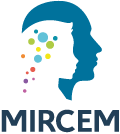List, inform
advise, propose
ACUTE DISSEMINATED ENCEPHALOMYELITIS
ACUTE DISSEMINATED ENCEPHALOMYELITIS
The acute disseminated encephalomyelitis (ADEM) is an inflammatory disease of the central nervous system. This condition affects children more than adults and most of the time it occurs only once in life. Occasionally, for unexplained reasons, it may represent as a first attack of multiple sclerosis (MS).
Disease characteristics
ADEM occurs mostly during winter and spring, and 51% to 74% of affected children were ill 2 weeks before the infection. Many infections are associated with ADEM although they are rarely identified, such as the Epstein Bar virus, which is the agent of mononucleosis, mycoplasma, measles and Streptoccoque A. It affects mostly boys under 10 years (mean age 7 years +/- 1).
Clinical manifestations
At the onset, headache associated with vomiting and fatigue and sleepiness can occur. In 15% to 35% of cases, seizures have been reported. Other symptoms include difficulties in walking (gait difficulties), in the use of the hands (monoplegia or hemiplegia), numbness and sometimes visual disturbances.
Evidence of the disease
There are several definitions for this disease which are still debated at the international level. However, in France, ADEM is defined by:
- A polysymptomatic disease, i.e. multiple symptoms must coexist in the same child such as blurred vision and numbness of the leg, for example.
- An alteration of consciousness.
- Lesion of the white matter in the brain MRI.
When the patient is suspected to haveADEM, several tests are done routinely such as:
- A magnetic resonance imaging of both the brain and also the cord to find lesions in the white matter.
- A lumbar puncture to search for irritation of the meninges or brain.
Evolution
In most cases, ADEM heals without complications and does not relapse (70% of cases in the French Kidsep cohort). However, 11% of children had major sequelae (cognitive or motor) in that cohort.
Treatment
The main treatment is high doses intra-venous methylpredinosone (steroids), given and monitored in the hospital. Sometimes a switch to oral corticosteroid treatment is necessary but not mandatory.
Monitoring
Children are regularly monitored for at least 1 to 2 years.









